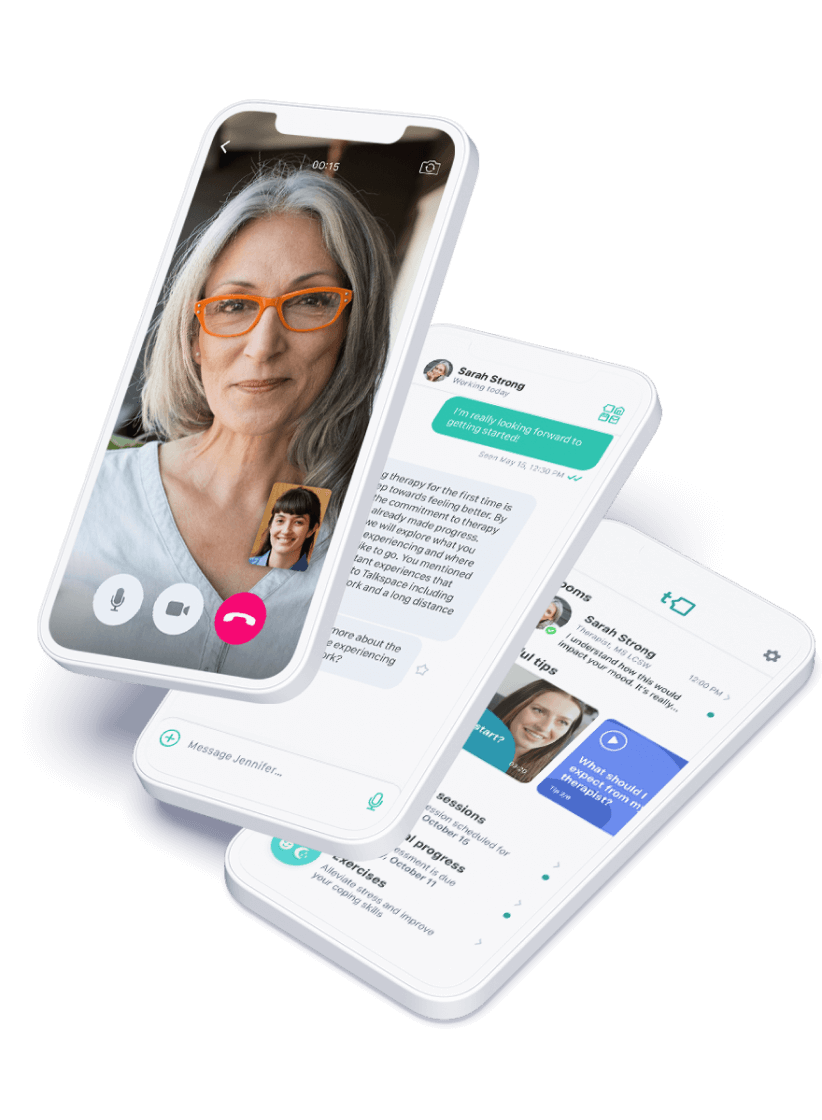PTSD
Read Time: 5 MinutesUpdated On: March 19, 2025
Overview
War flashbacks can feel like being pulled into a storm without warning. They’re vivid, distressing, and deeply personal, but unfortunately, they’re also a common symptom of post-traumatic stress disorder (PTSD). This heightened state can make individuals feel as though they are back in life-threatening situations. For veterans and active service members, these flashbacks can wreak havoc on daily life, evoking the intense emotions and fears tied to traumatic combat experiences. However, understanding why PTSD flashbacks occur and learning strategies to manage them can provide a path to healing and a sense of control.
In this article, we’ll explore the causes and symptoms of PTSD flashbacks, the simuli that are likely to bring them on, and evidence-based strategies for how to cope and recover.
What Are PTSD War Flashbacks?
PTSD war flashbacks aren’t just memories—they’re vivid, overwhelming experiences that make it feel like the past is happening all over again. These involuntary episodes can pull someone back into the sights, sounds, and emotions of a traumatic event, blurring the line between then and now.
Flashbacks don’t always appear as visual memories. They can hit like a sudden wave of fear, the phantom sensation of an old injury, or even a racing heartbeat brought on by something as simple as a loud noise. For example, a veteran might hear fireworks and, in an instant, feel the heat of battle, smell the smoke in the air, and brace for impact—all while standing in their own backyard.
These moments don’t come with a warning. They can take over in the middle of a work meeting, a conversation with family, or a quiet evening at home. The unpredictability makes them not only distressing but deeply disruptive, turning everyday life into a struggle of its own.
Symptoms of PTSD flashbacks
PTSD flashback symptoms don’t always look the same for everyone. While some people experience vivid, movie-like replays of traumatic events, others may feel intense emotions or physical sensations without clear images. Common PTSD flashback symptoms include:
- Emotional distress: Overwhelming feelings of fear, anger, sadness, or helplessness
- Physical sensations: A racing heart, sweating, dizziness or even feeling pain that was associated with the original trauma
- Disorientation: Losing awareness of time and place, feeling disconnected from reality, or struggling to differentiate between past and present
- Behavioral reactions: Freezing in place, ducking for cover, shouting, or reacting as though danger is imminent
Why Do War Flashbacks Happen?
To understand why PTSD war flashbacks happen, it helps to examine the psychological effects of military service and understand how the brain processes those traumatic memories. When someone experiences a life-threatening event, like a military conflict, or a highly distressing event, the brain encodes the experience differently from other, non-threatening memories.
This process — what neuroscientists refer to as fear processing —involves three parts of the brain: the amygdala, hippocampus, and prefrontal cortex.
- Amygdala: This part of the brain is responsible for detecting threats and controlling fear responses. In PTSD, it becomes overactive, amplifying the brain’s reaction to a perceived threat.
- Hippocampus: This region is critical for forming and storing memories. Research shows that in people with PTSD, the hippocampus shows structural changes and disrupted patterns of activation. As a result, memories may remain fragmented, unprocessed, and easily reactivated, leading to flashbacks that feel as if the trauma is happening all over again.
- Prefrontal cortex: This area helps regulate emotions, decision-making, and rational thinking. In people with PTSD, this area shows reduced levels of activation, which means that the brain has a harder time controlling overactive threat signals coming from the amygdala.
Stimuli — experiences or sensations that remind someone of the trauma — can reactivate traumatic memories. They can vary widely and result from external factors, such as loud noises or specific smells, or internal experiences, like someone’s emotional state.
“The brain associates the trigger with the danger of the traumatic event, leading to a strong emotional response even when there is no immediate threat. The emotions are so strong your brain and emotions become disoriented and react in a flight or fight response. Therapy can teach coping skills and recognition of triggers before they can have a negative effect.”
Expert Insight
 Licensed Clinical Social Worker (LCSW), PhD Reshawna Chapple
Licensed Clinical Social Worker (LCSW), PhD Reshawna Chapple
Common Activators for PTSD War Flashbacks
Regaining control over PTSD flashbacks starts with understanding what sets them off. Activators can be subtle or overwhelming, often transporting someone back to a moment they’d rather leave in the past. They may vary from person to person, but some of the most common include:
- Loud noises: The sudden crack of fireworks, the blare of sirens, or the sharp sound of a car backfiring can feel eerily similar to combat, making the body react as if it’s back in the fight.
- Smells: The scent of burning fuel, charred materials, or even a familiar meal from deployment can bring back powerful, unexpected memories.
- Visual imagery: A uniform, a desert landscape, or a specific object associated with military service can instantly reignite emotions tied to past experiences.
- Emotional states: Feeling on edge, angry, or hyper-aware of surroundings can stir up memories, making past trauma feel alarmingly present.
- Anniversaries of traumatic events: Certain dates—battle anniversaries, the loss of a comrade, or other defining moments—can bring an intense wave of emotions, as if time hasn’t moved forward.
Identifying your own sensitivities is the first step in learning how to stop PTSD flashbacks before they escalate. Consider keeping a journal to track when flashbacks occur — what you were doing, where you were, and what emotions surfaced. The more you understand your personal activators, the more prepared you’ll be to develop strategies to cope with PTSD flashback symptoms effectively.
Online therapy for PTSD
Get treatment for PTSD with a trauma-informed therapist. Start therapy in days.
How To Deal With PTSD War Flashbacks
When a flashback strikes, it can feel like you’re being pulled out of the present and thrown back into the past. But you don’t have to stay there. Having effective grounding strategies can help you regain control and anchor yourself in reality. Here are some practical tips for how to deal with PTSD flashbacks when they happen:
Grounding techniques
When a flashback hits, it can feel overwhelming, but grounding techniques for PTSD can help bring you back to the present and remind you that you are safe from the situations once encountered during war experiences. One effective method is the 5-4-3-2-1 coping exercise, in which you would identify:
- Five things you can see
- Four things you can feel
- Three things you can hear
- Two things you can smell
- One thing you can taste.
This exercise is meant to bring you out of your head by redirecting your conscious awareness to the sensations of your physical body. By doing so, you can better manage stress and related symptoms.
Controlled breathing and relaxation
Flashbacks often elicit rapid, shallow breathing, increasing anxiety. To counter this, practice deep breathing exercises for anxiety like box breathing:
- Inhale deeply for 4 seconds
- Hold for 4 seconds
- Exhale for 4 seconds
- Repeat the exercise until your heart rate slows down and your body relaxes
By incorporating these natural remedies for PTSD, you can navigate PTSD flashbacks with more control and resilience.
Seek a safe environment
When a flashback occurs, finding a quiet, safe space can make a big difference. If possible, move to a calm area where you can sit or lie down until the moment passes. Dim lighting, soothing music, or a familiar object—like a blanket or a personal keepsake—can help ground you and provide comfort. Creating a sense of safety allows your nervous system to settle and signals to your brain that you are no longer in danger.
Build a support network
Coping with PTSD flashbacks is easier when you don’t have to do it alone. Trusted friends, family members, or therapists who understand your war experiences can offer reassurance and guidance when you need it most. Reaching out—whether during or after a flashback—can provide emotional support and reassurance that you’re not alone.
While overcoming flashbacks takes time, consistently using these strategies can help reduce their intensity and impact, allowing you to regain a sense of control over your daily life.
Treatment Options for PTSD War Flashbacks
Long-term management of PTSD and war flashbacks often requires professional treatment. Fortunately, there are several tried and true approaches that have been proven to reduce the frequency and severity of flashback symptoms, even in those with prolonged exposure to war zones and traumatic events.
“Therapy provides individuals with evidence-based techniques, such as cognitive-behavioral therapy (CBT) and EMDR, to process traumatic memories and reduce the intensity of flashbacks.”
Expert Insight
 Licensed Clinical Social Worker (LCSW), PhD Reshawna Chapple
Licensed Clinical Social Worker (LCSW), PhD Reshawna Chapple
Prolonged exposure therapy
Prolonged exposure (PE) therapy is a structured, trauma-focused therapy that helps individuals gradually revisit memories in a safe and controlled environment. Through repeated exposure — both in the form of recounting the trauma in detail and engaging in activities previously avoided due to fear — veterans can reduce the emotional charge of those memories over time.
Cognitive behavioral therapy (CBT)
Cognitive behavioral therapy (CBT) focuses on identifying and reframing negative thought patterns that contribute to PTSD symptoms. By challenging distorted beliefs — such as feelings of guilt, shame, or self-blame — CBT for PTSD empowers veterans to regain control over their physical and emotional reactions to trauma.
Eye movement desensitization and reprocessing (EMDR)
Eye movement desensitization and reprocessing therapy (EMDR) is a unique type of therapy that helps reprocess traumatic memories by combining guided eye movements with cognitive restructuring. Research suggests that EMDR can lead to significant improvement in PTSD symptoms in as little as 6 to 12 weeks.
Medication
Medications like selective serotonin reuptake inhibitors (SSRIs), such as sertraline (Zoloft) and paroxetine (Paxil), are commonly prescribed to help regulate mood and reduce the severity of PTSD symptoms. While PTSD medication doesn’t erase trauma, it can help manage anxiety, depression, and hypervigilance, making it easier to engage in therapy.
Supporting a Loved One Experiencing PTSD War Flashbacks
Watching a loved one experience a PTSD flashback is difficult, but your support can make a world of difference. Here are a few ways friends and family can help loved ones through PTSD flashbacks:
- Stay calm and offer reassurance: Speak in a gentle, steady tone and remind them they are safe.
- Create a comforting environment: Avoid sudden movements or loud noises that could intensify the flashback.
- Be mindful of their sensitivities: While you can’t always prevent flashbacks, understanding what sets them off can help reduce exposure.
- Encourage professional support: Recovery is a personal journey, and while therapy for PTSD can help, patience and understanding go a long way.
Healing from war-related trauma isn’t a battle anyone should fight alone. If your loved one isn’t ready to seek help, that’s okay. Let them know support is there—whenever they’re ready.
Moving Forward: Healing Is Possible
War flashbacks may feel like a cruel symptom of PTSD, but with the right tools and support, healing is possible. If you or a loved one are struggling with PTSD and war flashbacks, you don’t have to navigate this alone.
Talkspace offers accessible, specialized PTSD treatment for veterans and their families, providing support whenever and wherever you need it. Seeking help isn’t a sign of weakness—it’s an act of strength. Taking the first step toward healing is a powerful decision, and you don’t have to take it alone. Get support for you or your loved ones with online therapy for veterans.
See References
-
Understanding PTSD flashbacks and triggers
PTSD UK. Accessed January 28, 2025.
-
Prefrontal cortex, amygdala, and threat processing: implications for PTSD
Alexandra Kredlow M, Fenster RJ, Laurent ES, Ressler KJ, Phelps EA. Neuropsychopharmacol. 2022;47(1):247-259.
-
Relationship of hippocampal volumes and posttraumatic stress disorder symptoms over early posttrauma periods
Xie H, Claycomb Erwin M, Elhai JD, et al. Biol Psychiatry Cogn Neurosci Neuroimaging. 2018;3(11):968-975.
-
Smith S. 5-4-3-2-1 Coping technique for anxiety
University of Rochester Medical Center. Published October 4, 2018. Accessed January 28, 2025.
-
Square breathing
Acharya, J. Ball State University. Published 2018. Accessed January 28, 2025.
-
Prolonged exposure (PE)
American Psychological Association. Published July 31, 2017. Accessed January 27, 2025.
-
Cognitive processing therapy (CPT)
American Psychological Association. Published 2017. Accessed January 27, 2025.
-
Eye movement desensitization and reprocessing (EMDR) therapy
American Psychological Association. Published July 31, 2017. Accessed January 27, 2025.
-
Medications for PTSD
American Psychological Association. Published July 31, 2017. Accessed January 27, 2025.

Dr. Reshawna Chapple, PhD, LCSW is a Therapist and Peer Consultant at Talkspace. She is a California born - Florida based Licensed Clinical Social Worker and an Associate Professor of Social Work at the University of Central Florida. Her areas of research, teaching and practice include the intersection of race, gender and ability, intimate partner violence and trauma recovery, and access to culturally responsive mental health treatment for Black women and Deaf women.


